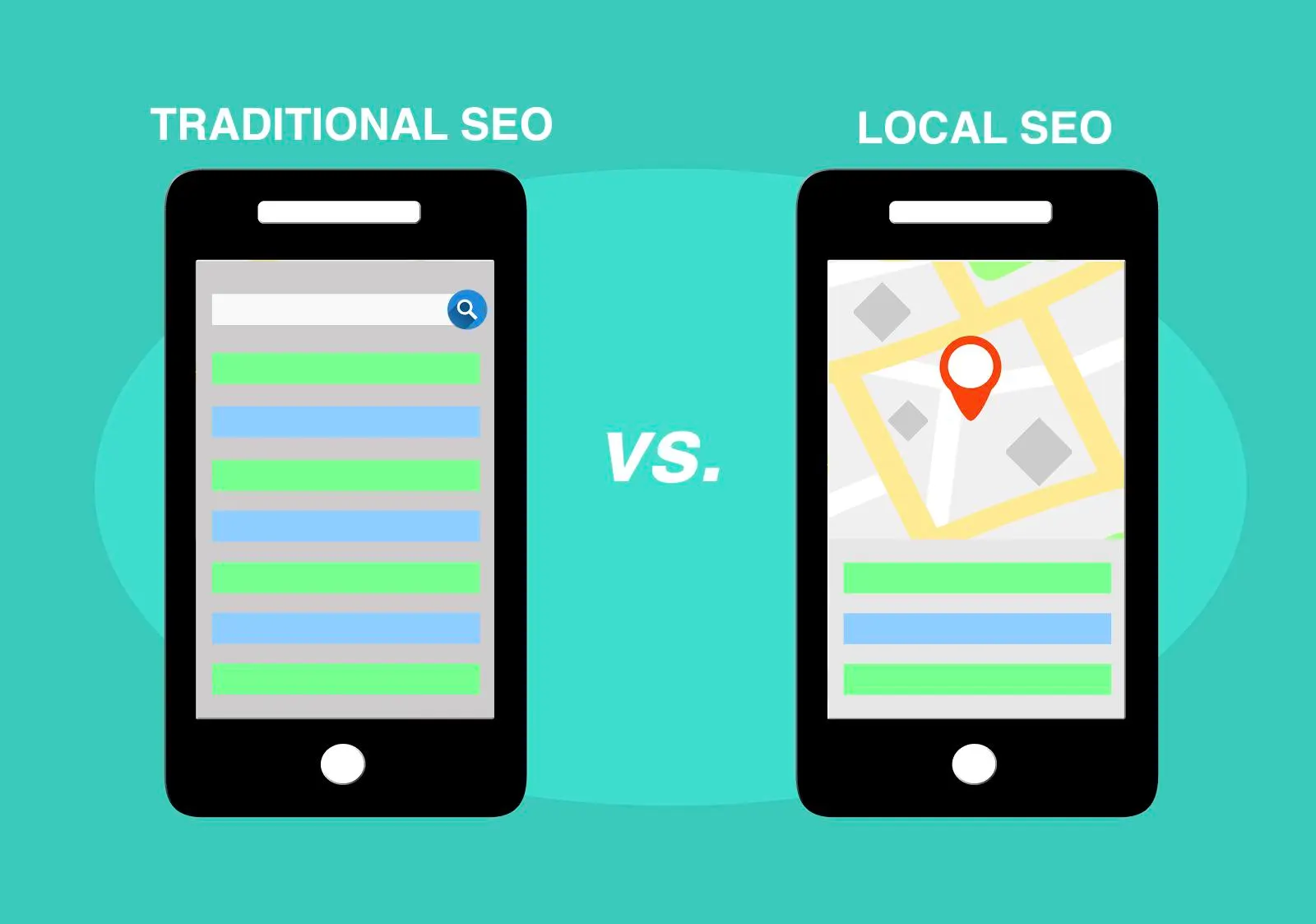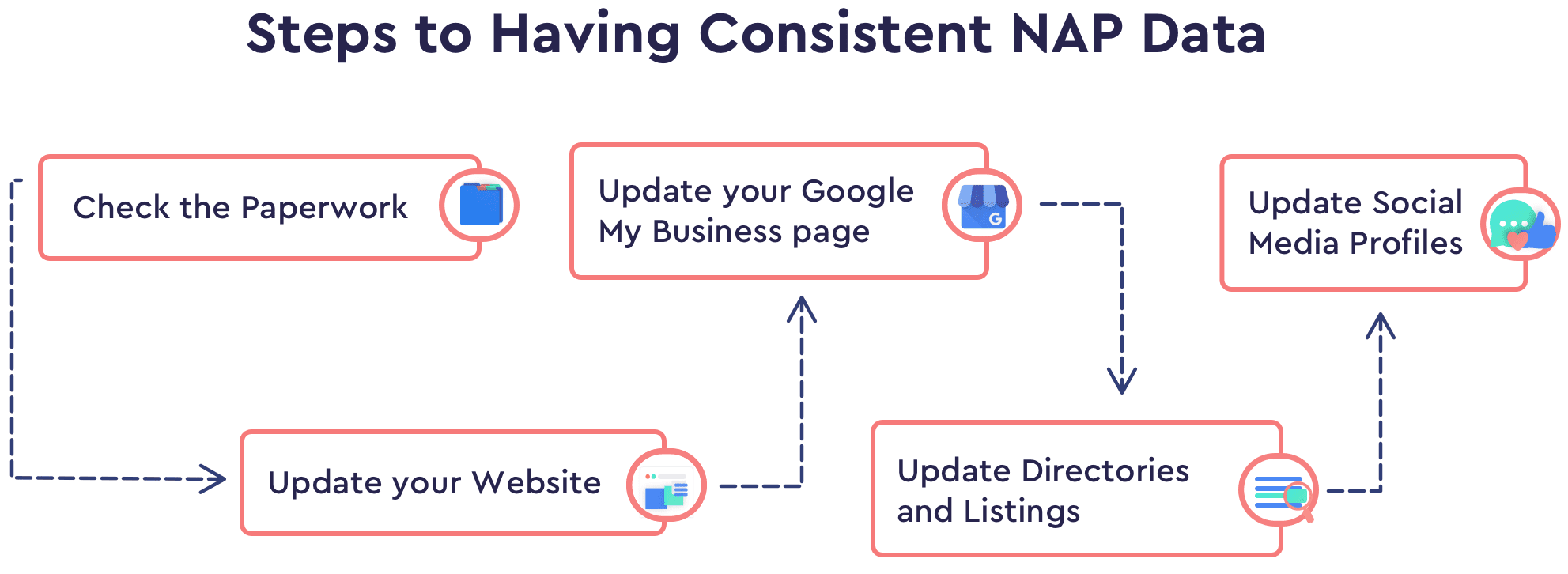[This is a test site and all posts are generated with ChatGPT unless indicated otherwise.]
Did you know that 46% of all Google searches have local intent? In today’s digital landscape, local search engine optimization (SEO) has become crucial for businesses aiming to thrive in their local markets. Whether you run a small brick-and-mortar store or a multinational franchise, understanding and implementing effective local SEO strategies can significantly impact your online visibility, customer acquisition, and revenue generation.
In this comprehensive guide, we will delve into the world of local SEO, exploring its significance and uncovering the key elements and best practices that will help you dominate the local search results. So, fasten your seatbelts and get ready to unlock the power of local SEO!
What is Local SEO?
Local SEO refers to the process of optimizing a website to increase its visibility and prominence in local search results. It involves a set of strategies and techniques aimed at improving a business’s online presence within a specific geographic area. The primary goal of local SEO is to help businesses connect with local customers when they search for relevant products or services.
Local SEO vs Traditional SEO
While traditional SEO focuses on improving a website’s visibility on a global or national scale, local SEO targets a specific geographical location. Traditional SEO aims to rank a website for broader keywords, whereas local SEO aims to optimize for location-specific keywords and phrases. For instance, instead of targeting “Italian restaurant,” a local SEO campaign may target “Italian restaurant in [City Name].”
Local SEO also emphasizes the optimization of various online platforms beyond just the website itself. It involves optimizing and managing Google My Business (GMB) listings, online directories, and review platforms to enhance a business’s visibility in local search results.

Importance of local SEO for businesses
Local SEO is vital for businesses of all sizes, especially those with physical locations or those that cater to specific local markets. Here’s why local SEO is crucial:
1. Targeted visibility
Local SEO helps businesses appear prominently in search results when potential customers search for products or services in their area. This targeted visibility increases the chances of attracting local customers who are more likely to convert into paying clients.
2. Increased website traffic
Optimizing for local search allows businesses to drive relevant traffic to their website. When local customers find a business in their vicinity during their online search, they are more inclined to visit the website for more information or to make a purchase.
3. Mobile search dominance
With the rise in mobile usage, local search has become even more critical. Many customers search for local businesses while on the go, looking for immediate solutions or nearby options. Local SEO ensures that businesses can capture this mobile-driven traffic effectively.
4. Competitive advantage
Implementing effective local SEO strategies can help businesses gain a competitive edge over their local competitors. By appearing higher in local search results and having an optimized online presence, businesses can attract more customers and establish themselves as reputable choice in the local market.
Statistics or case studies showcasing the impact of local SEO
To highlight the impact and significance of local SEO, let’s take a look at some statistics and case studies:
- According to Google, 76% of people who conduct a local search on their smartphones visit a business within 24 hours, and 28% of those searches result in a purchase.
- BrightLocal’s Local Consumer Review Survey found that 91% of consumers trust online reviews as much as personal recommendations. Positive reviews and ratings can significantly impact a business’s local search visibility and reputation.
- Moz’s Local Search Ranking Factors study revealed that Google My Business signals, such as proximity, categories, and reviews, account for 33% of the overall ranking factors for local pack results.
- A case study by Whitespark, an SEO software company, showed that optimizing a business’s GMB listing increased the number of impressions by 105%, the number of actions taken (website visits, direction requests, etc.) by 102%, and the number of phone calls by 135%.
These statistics and case studies demonstrate the tangible impact that local SEO can have on a business’s online visibility, customer engagement, and ultimately, its bottom line.
Understanding local SEO is the first step toward harnessing its potential. In the next sections, we will explore the key elements and best practices that will help businesses excel in local search results and dominate their local markets.
Key Elements of Local SEO
1. Google My Business (GMB) optimization
Google My Business (GMB) is a free tool provided by Google that allows businesses to manage their online presence on Google. It is one of the most critical elements of local SEO as it enables businesses to appear in local search results, Google Maps, and Google’s local pack.

Steps to Optimize a GMB Listing
Optimizing a GMB listing is crucial for local SEO success. Here are some steps to optimize a GMB listing:
- Claim and verify the listing: Claim your GMB listing and verify your business’s ownership to gain full control of the listing and prevent any unauthorized changes.
- Complete all the relevant information: Fill out all the necessary information, including business name, address, phone number, website URL, business category, business hours, and images.
- Add relevant attributes: Add attributes such as payment methods, amenities, and accessibility features to help potential customers find the information they need quickly.
- Encourage reviews: Encourage customers to leave reviews and respond to all reviews, whether positive or negative, to show that the business is engaged and cares about customer satisfaction.
2. Local keyword research
Targeting location-specific keywords is crucial for local SEO success. It helps businesses appear in local search results when potential customers search for products or services in their area. Using location-specific keywords also helps businesses stand out from their competitors and attract more local customers.

Tools and techniques for finding local keywords
There are several tools and techniques for finding local keywords, including:
- Google Autocomplete: Use Google’s autocomplete feature to see what people are searching for in your area.
- Google Trends: Use Google Trends to see the search volume trends for specific keywords in your area.
- Local Keyword Tool: Use a local keyword tool such as Ahrefs or SEMrush to find relevant and high-traffic local keywords.
3. On-page optimization for local SEO
a. Title tags, meta descriptions, and headers
On-page optimization elements like title tags, meta descriptions, and headers are crucial for local SEO. Including location-specific keywords in these elements can help businesses appear in local search results. Additionally, using headers such as H1 and H2 tags to structure content can improve readability and enhance the user experience.
b. URL structure and keyword placement
Optimizing URL structure and keyword placement is another critical on-page optimization element for local SEO. Including location-specific keywords in the URL and throughout the content can help businesses appear in local search results.
c. Content optimization for local relevance
Creating relevant and high-quality content is crucial for local SEO success. Creating location-specific content can help businesses attract local customers and improve their online presence in local search results.
4. NAP consistency
NAP stands for Name, Address, and Phone Number. Consistent NAP information is crucial for local SEO success as it helps search engines understand the business’s location and contact information.

Ensuring consistent NAP information across online directories, including GMB, Yelp, and Facebook, is crucial for local SEO success. Inconsistent NAP information can confuse search engines and potential customers, leading to a decrease in online visibility and customer engagement.
5. Online reviews and ratings
Online reviews and ratings play a significant role in local SEO. Positive reviews and ratings can significantly impact a business’s local search visibility and reputation. Search engines, including Google, also consider online reviews and ratings when ranking businesses in local search results.

Strategies for acquiring and managing reviews
To leverage the power of online reviews and ratings for local SEO, consider the following strategies:
- Encourage satisfied customers to leave reviews: Actively ask your satisfied customers to leave reviews on platforms such as Google, Yelp, and industry-specific review sites. You can do this through follow-up emails, social media engagement, or even by placing review request cards in your physical location.
- Respond to reviews: Engage with your customers by responding to their reviews, both positive and negative. Thank customers for their positive feedback and address any concerns or issues raised in negative reviews. Showing that you value customer feedback can enhance your business’s reputation and attract more customers.
- Monitor and manage reviews across platforms: Regularly monitor and manage your online reviews. Set up alerts to receive notifications when new reviews are posted. Address any negative reviews promptly and professionally, demonstrating your commitment to customer satisfaction. This proactive approach can help mitigate the impact of negative reviews and maintain a positive online reputation.
6. Local link building
Local link building refers to the process of acquiring backlinks from local sources such as local businesses, organizations, or directories. Local backlinks can significantly boost your local SEO efforts by enhancing your business’s authority and credibility in the eyes of search engines.

Tactics for building local links
Here are some tactics to build local links:
- Partner with local businesses: Seek opportunities to collaborate with other local businesses, such as hosting joint events, guest blogging on their websites, or featuring them in your content. These collaborations can lead to valuable local backlinks.
- Get involved in the community: Sponsor local events, charities, or organizations. By supporting local initiatives, you increase your chances of getting mentioned or linked to by local entities.
- Submit to local directories: Submit your business to reputable local directories such as local chamber of commerce websites, industry-specific directories, and local business associations. These directories can provide valuable backlinks and improve your business’s visibility in local search results.
Best Practices for Local SEO
1. Location-specific landing pages
Benefits of dedicated pages for different locations
Creating dedicated landing pages for different locations has several benefits for local SEO:
- Improved relevance: Location-specific landing pages allow businesses to optimize content with local keywords and provide information tailored to specific geographic areas, increasing relevance in local search results.
- Enhanced user experience: Dedicated pages provide users with targeted and customized information based on their location, improving the overall user experience and increasing the likelihood of conversions.
- Increased visibility: Having separate pages for each location increases the chances of appearing in location-based searches and local map pack results.
Tips for optimizing location pages
To optimize location-specific landing pages, consider the following tips:
- Include location-specific keywords: Incorporate relevant location-specific keywords naturally throughout the content, headings, meta tags, and URL.
- Provide unique and valuable content: Each location page should have unique content that highlights specific details about that location, such as an address, local attractions, testimonials from customers in that area, and any other relevant information.
- Optimize metadata: Ensure that the title tags, meta descriptions, and headers of location pages include relevant location keywords.
2. Mobile Optimization
Mobile optimization is crucial for local SEO due to the significant increase in mobile searches. Mobile-friendly websites provide a better user experience and contribute to better search engine rankings. Additionally, Google considers mobile-friendliness as a ranking factor for local search results.

Techniques for optimizing websites for mobile users
To optimize websites for mobile users and local SEO, consider the following techniques:
- Responsive design: Implement a responsive design that adjusts the website’s layout and content according to the user’s device screen size. This ensures a seamless and user-friendly experience across all devices.
- Fast loading speed: Optimize images, enable browser caching, and minimize code to improve website loading speed on mobile devices.
- Clear and concise content: Adapt content to be easily readable on smaller screens by using shorter paragraphs, bullet points, and headings.
3. Schema markup and structured data
Schema markup is a code added to a website’s HTML that provides structured data to search engines. It helps search engines understand and categorize information on web pages, enhancing the visibility and relevancy of search results. For local SEO, schema markup can provide important details about a business, such as its name, address, phone number, business hours, customer reviews, and more.
Examples of schema markup for local businesses
Some examples of schema markup for local businesses include:
- LocalBusiness schema: Provides general information about the business, including its name, address, phone number, and website URL.
- Reviews schema: Displays aggregate ratings and reviews for a business in search results, increasing visibility and credibility.
- Opening Hours Specification schema: Specifies the business’s operating hours, allowing search engines to display accurate opening and closing times.
4. Local content creation
Creating localized content is essential for local SEO as it helps businesses connect with their target audience in specific geographic areas. Localized content demonstrates expertise and relevance to local customers, increasing engagement and conversions.

Ideas for creating relevant and engaging local content
To create relevant and engaging local content, consider the following ideas:
- Local guides and tips: Create guides or blog posts that provide insights, tips, and recommendations specific to the local area, such as “Top 10 Things to Do in [Location]” or “Best Local Restaurants for [Cuisine].”
- Local event coverage: Cover local events, festivals, or community initiatives, sharing stories, photos, and videos to engage with the local audience.
- Customer spotlights: Highlight local customers or clients and share their success stories, showcasing how your business has positively impacted the local community.
- Location-specific news and updates: Share news and updates related to your industry that are specifically relevant to the local area, demonstrating your knowledge and involvement in the local community.
By implementing these best practices for local SEO, businesses can enhance their online visibility, attract local customers, and establish a strong presence in their target locations. Remember to regularly analyze and measure the effectiveness of your strategies to make necessary adjustments and stay ahead in the competitive local search landscape.
Tracking and Measuring Local SEO Success
Setting up tracking and monitoring tools
To effectively track and monitor local SEO performance, it’s essential to set up and utilize proven SEO tools such as Google Analytics and Google Search Console. Here’s how to get started:
1. Google Analytics
Install the Google Analytics tracking code on your website to gather valuable insights about your website’s traffic, user behavior, and conversions. Ensure that your Google Analytics account is properly configured to track local traffic by setting up goals and filters.
2. Google Search Console
Verify your website with Google Search Console to monitor how your site is performing in search results. It provides data on organic search traffic, impressions, click-through rates (CTRs), and keywords that users are searching for to find your website.
Key metrics to measure local SEO performance
When it comes to measuring local SEO success, consider the following key metrics:
- Organic website traffic: Track the overall organic traffic to your website. Look for an increase in local organic traffic as an indication of improved local SEO performance.
- Local keyword rankings: Monitor the rankings of your target local keywords in search engine results pages (SERPs). A rise in rankings suggests that your local SEO efforts are paying off.
- Click-through rates (CTRs): Analyze the CTRs for your local search listings. Higher CTRs indicate that your listings are compelling and attracting more clicks.
- Conversion rate: Measure the conversion rate for local visitors. Track how many local users are taking desired actions on your website, such as making purchases or submitting contact forms.
Local SEO reporting
Regular reporting is essential for tracking progress and identifying areas for improvement in your local SEO efforts. Here’s how to create effective reports:
- Define reporting periods: Determine the frequency of your reports, whether it’s monthly, quarterly, or any other suitable timeframe.
- Include key metrics: Incorporate the key metrics mentioned earlier (organic website traffic, local keyword rankings, CTRs, conversion rate) into your reports to provide a comprehensive overview of your local SEO performance.
- Visualize data: Use charts, graphs, and tables to present data in a visually appealing and easy-to-understand format. Visual representations make it simpler to identify trends and patterns.
- Provide insights and recommendations: Offer analysis and insights based on the data in your reports. Highlight areas of success and areas that require improvement. Include actionable recommendations to enhance local SEO performance.
Identifying areas for improvement based on data
Data-driven reporting allows you to identify areas for improvement in your local SEO strategy. Here are some actions you can take based on the data:
- Optimize underperforming local landing pages: If certain location-specific landing pages have low organic traffic or poor rankings, revisit their content, keywords, and optimization techniques to improve their performance.
- Refine local keyword targeting: Analyze the keywords that are driving the most traffic and conversions from local searches. Use this information to refine your keyword targeting and focus on terms that resonate with your local audience.
- Enhance local business listings: Regularly review your Google My Business (GMB) profile and other local directory listings. Ensure that all information is accurate, complete, and up-to-date. Respond to customer reviews promptly and address any negative feedback.
- Improve website usability and mobile experience: If your analytics data reveals high bounce rates or low conversion rates on mobile devices, consider optimizing your website for mobile users. Improve page load times, enhance mobile navigation, and ensure a seamless mobile browsing experience.
By diligently tracking and measuring your local SEO efforts, you can gauge the effectiveness of your strategies, identify areas for improvement, and make data-driven decisions to enhance your local online presence and attract more customers from your target location.
Future Trends in Local SEO
1. Voice Search and Its Impact on Local SEO
Voice search is changing the way people interact with search engines, and it’s becoming increasingly popular. According to Google, 20% of all searches are voice searches, and this number is expected to grow rapidly in the coming years.

As more people use voice search to find local businesses, it will become more important than ever for businesses to optimize their content for voice search queries. This means that businesses should focus on long-tail keywords and natural language phrases, as well as optimizing for featured snippets, which are the search results that are read aloud by voice assistants like Siri and Alexa.
2. The rising importance of online reputation management
Online reputation management is becoming increasingly important for local businesses, as more and more consumers rely on online reviews to make purchasing decisions. A recent survey found that 93% of consumers read online reviews before making a purchase, and 85% of consumers trust online reviews as much as personal recommendations.
This means that businesses need to actively manage their online reputation, by monitoring and responding to reviews, and by proactively encouraging satisfied customers to leave positive reviews. Additionally, businesses should strive to provide a positive customer experience, as this will lead to more positive reviews and increased customer loyalty.
Predictions for the Future of Local SEO
As the world becomes increasingly digital, local SEO will continue to evolve to meet the changing needs of businesses and consumers. Here are a few predictions for the future of local SEO:
- Increased focus on hyperlocal targeting: As technology improves, businesses will be able to target consumers with even greater precision, based on their exact location. This will enable businesses to create highly targeted local campaigns that are tailored to the needs and interests of their target audience.
- The growing importance of video: Video content is becoming increasingly popular, and it’s a great way for businesses to showcase their products and services. In the future, businesses will need to create high-quality video content that is optimized for local search, in order to stand out from the competition.
- Greater emphasis on user experience: As Google continues to refine its algorithms, user experience will become an increasingly important factor in local search rankings. Businesses that provide a positive user experience, with fast-loading pages and easy-to-use navigation, will be rewarded with higher rankings and increased traffic.
- Increased use of artificial intelligence: As artificial intelligence continues to advance, it will play an increasingly important role in local SEO. AI-powered tools will enable businesses to analyze data more effectively, automate certain tasks, and create more personalized experiences for their customers.
Overall, local SEO is constantly evolving, and businesses that stay ahead of the curve will be best positioned to succeed in the future. By keeping up with the latest trends and best practices, businesses can enhance their online presence and attract more customers from their target location.
Improve Your Business Visibility with Local SEO
Local SEO is no longer optional but essential for businesses that want to thrive in the digital age. By implementing local SEO strategies, businesses can enhance their online visibility, attract local customers, and gain a competitive edge in their target locations.
Therefore, we encourage you to take action and implement these local SEO strategies for your business. Start by optimizing your Google My Business listing, conducting local keyword research, and ensuring consistency across online directories. Regularly monitor and measure your local SEO efforts using tools like Google Analytics and Google Search Console, and make necessary adjustments based on the data.
By dedicating time and effort to local SEO, you can drive more targeted traffic to your website, increase customer engagement, and ultimately boost your business’s success in the local market.
So, don’t wait any longer. Take the first step towards improving your local online presence and attracting more customers by implementing these local SEO strategies today. Your business and its growth depend on it.


